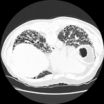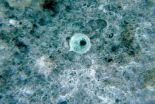(Press-News.org) ATS 2012, SAN FRANCISCO – A number of specific risk factors are associated with an exacerbation-prone phenotype of severe asthma, according to a new study from researchers in Sweden.
The results will be presented at the ATS 2012 International Conference in San Francisco.
"Acute exacerbations are a major source of morbidity and mortality in asthma," said lead author Maciek Kupczyk, MD, PhD, a researcher at the Karolinska Institutet in Stockholm "In children, the costs of asthma care are three times higher in exacerbators as compared to those patients who did not experience any attacks. Exacerbations are a prominent feature of poorly controlled and severe asthma, and even in patients with mild disease, the rates of severe exacerbations are high."
"Recent ATS/ERS guideline point out that exacerbations constitute the greatest risk to patients, are the major cause of stress and anxiety to patients and their families, and generate the greatest cost to the health care system," continued Dr. Kupczyk. "In our clinical practice, we have recognized a subgroup of asthma patients that experience a higher rate of exacerbations. In contrast to chronic obstructive pulmonary disease (COPD), the phenotype of frequent exacerbators has not been clearly characterized in asthma patients."
The study enrolled 93 patients with severe asthma and 76 patients with mild-to-moderate asthma who were followed for one year. Patients with at least one exacerbation despite high-dose inhaled corticosteroid treatment and specialist care in the year prior to enrollment in the study were considered to have severe asthma.
A total of 122 exacerbations were recorded during follow-up, including 104 that occurred in 52 patients with severe asthma and 18 that occurred in 16 patients with moderate asthma. Frequent exacerbations occurred only in the severe asthma group.
Frequent exacerbators used significantly higher doses of inhaled and oral glucocorticosteroids, had worse asthma control, and had higher C-reactive protein levels and higher sputum eosinophils at baseline as compared with non-frequent exacerbators. A significantly faster decline in FEV1/FVC ratio was also seen in frequent exacerbators.
When frequent exacerbations were defined as two or more events per year, Juniper asthma control questionnaire (ACQ) score, sputum eosinophils ≥2%, smoking history, lower quality of life, and forced expiratory volume (FEV1) ≤70% were associated with the development of exacerbations. When frequent exacerbations were defined as three or more events per year, body mass index >25, quality of life, smoking, and Juniper ACQ score were associated with the development of exacerbations.
"Exacerbations are important events in the natural history of asthma that is not well controlled," said Dr. Kupczyk. The implications of these flare-ups include an increased risk of mortality, low health status, decreased quality of life, and extensive utilization of health care resources."
"In this study we detail the characteristics of frequent exacerbators' phenotype based on medical history, physiological variables and biomarkers," said Dr. Kupczyk. "The ability to identify patients at greatest risk for future exacerbations is vital for developing effective preventive strategies, reducing health care costs, and achieving good asthma control.
"Appropriate long term management strategies using a personalized medicine approach, coupled with improved compliance, should reduce mortality and morbidity associated with asthma exacerbations," Dr. Kupczyk concluded. "However, further studies are needed to clarify which treatment option is optimal in frequent exacerbators."
###
"Identification Of Risk Factors For Frequent Exacerbations In Severe Asthma" (Session A92, Sunday, May 20, 2:00- 4:30 p.m., Room 2005-2007, Moscone Center; Abstract 31646)
* Please note that numbers in this release may differ slightly from those in the abstract. Many of these investigations are ongoing; the release represents the most up-to-date data available at press time.
Abstract 31646
Identification Of Risk Factors For Frequent Exacerbations In Severe Asthma
Type: Scientific Abstract
Category: 01.10 - Clinical Asthma (AII)
Authors: M. Kupczyk, S. Hague, R. Middelveld, B. Dahlen, S.-E. Dahlen; Karolinska Institutet - Stockholm/SE; On behalf of the BIOAIR Group
Abstract Body
Rationale: Frequent exacerbations are a poor prognostic sign in asthma. There are few studies on exacerbations that have followed patients with repeated objective measures over longer time-periods. In the European multicentre study BIOAIR on severe asthma, we aimed at assessing if certain risk factors could be associated with an exacerbation-prone phenotype.
Methods: 93 patients with severe asthma (SA) and 76 with mild-to-moderate asthma (MA) were followed up for one year with recording of daily symptom and lung function using electronic diaries (Vitalograph®) and extended measurements being done at clinic visits every third month. Severe asthma was defined by at least one exacerbation in the year preceding the start of the study despite use of high doses of inhaled corticosteroids (≥1600 μg of budesonide or equivalent) and specialist care. Risk factors for frequent exacerbations (FE) (defined as either ≥2 or ≥3 events/year) were evaluated in a comprehensive database on patient characteristics.
Results: In total, 122 exacerbations were recorded, including 104 events in 52 SA patients (55.9% of SA cohort) and 18 events in 16 MA (22.2% of MA cohort). The average rate of exacerbations was 1.1 events per patient per year in SA and 0.2 events in MA. Significant decrease in PEF values, FEV1, increase in rescue medication use, day and night symptoms during exacerbations were recorded (p END
Risk factors for an exacerbation-prone asthma phenotype
2012-05-21
ELSE PRESS RELEASES FROM THIS DATE:
Study says children exposed to tobacco smoke face long-term respiratory problems
2012-05-21
ATS 2012, SAN FRANCISCO – For more than three decades, researchers have warned of the potential health risks associated with exposure to environmental tobacco smoke (ETS), especially among children whose parents smoke. Now a new study conducted by researchers from the University of Arizona reports that those health risks persist well beyond childhood, independent of whether or not those individuals end up becoming smokers later in life.
The study will be presented at the ATS 2012 International Conference in San Francisco.
"This study shows that exposure to parental ...
Treatment of childhood OSA reverses brain abnormalities
2012-05-21
ATS 2012, SAN FRANCISCO - Treatment of obstructive sleep apnea (OSA) in children normalizes disturbances in the neuronal network responsible for attention and executive function, according to a new study.
"OSA is known to be associated with deficits in attention, cognition, and executive function," said lead author Ann Halbower, MD, Associate Professor at the Children's Hospital Sleep Center and University of Colorado Denver. "Our study is the first to show that treatment of OSA in children can reverse neuronal brain injury, correlated with improvements in attention ...
Prenatal exposure to pollution especially dangerous for children with asthma
2012-05-21
ATS 2012, SAN FRANCISCO – The link between prenatal exposure to air pollution and childhood lung growth and respiratory ailments has been established by several studies in recent years, and now a new study suggests that these prenatal exposures can be especially serious for children with asthma.
The study will be presented at the ATS 2012 International Conference in San Francisco.
"In this study, we found that prenatal exposures to airborne particles and the pollutant nitrogen dioxide adversely affect pulmonary function growth among asthmatic children between 6 and ...
4 acute mushroom poisonings in 2 weeks
2012-05-21
SAN DIEGO – On September 12, 2011, a Springfield, Virginia man arrived at MedStar Georgetown University Hospital (MGUH) in the early stages of liver failure. The man had mistakenly eaten poisonous mushrooms, handpicked from his yard. He would be the first of four patients in the course of two weeks to seek treatment at MGUH for mushroom (amanitin) poisoning. Their clinical course, management, and outcomes were presented today at Digestive Disease Week (DDW) in San Diego, the largest international gathering of physicians and researchers in the field of gastroenterology, ...
Statins prevent cancer in heart transplant recipients
2012-05-21
Statins prevent cancer and reduce death from all causes in heart transplant recipients. The findings were independent of cholesterol levels.
The research was presented at the Heart Failure Congress 2012, 19-22 May, in Belgrade, Serbia. The Congress is the main annual meeting of the Heart Failure Association of the European Society of Cardiology.
Cancer is the leading cause of death late after heart transplantation. Skin cancer is particularly common, but solid organ cancers including colorectal cancer, prostate cancer and lymphoma also occur. The increased rate of ...
UW study: Sleep apnea associated with higher mortality from cancer
2012-05-21
Madison, Wis. and San Francisco — Sleep-disordered breathing (SDB), commonly known as sleep apnea, is associated with an increased risk of cancer mortality, according to a new study.
While previous studies have associated SDB with increased risks of hypertension, cardiovascular disease, depression, and early death, this is the first human study to link apnea with higher rate of cancer mortality. Lead author Dr. F. Javier Nieto, chair of the department of population health sciences at the UW School of Medicine and Public Health, says the study showed a nearly five times ...
First, do no harm: Study finds danger in standard treatment for a serious lung disease
2012-05-21
A combination of three drugs used worldwide as the standard of care for a serious lung disease puts patients in danger of death or hospitalization, and should not be used together to treat the disease, called idiopathic pulmonary fibrosis, according to the surprising results of a rigorous independent study.
The study, which will appear online May 20 in the New England Journal of Medicine to coincide with a presentation at the annual meeting of the American Thoracic Society, was conducted by IPF Clinical Research Network, funded by the National Heart, Lung, and Blood Institute ...
Lab tests show arthritis drug effective against global parasite
2012-05-21
A team of researchers from UCSF and UC San Diego has identified an approved arthritis drug that is effective against amoebas in lab and animal studies, suggesting it could offer a low-dose, low cost treatment for the amoebic infections that cause human dysentery throughout the world.
Based on these results, the team has received Orphan Drug Status for the drug, known as auranofin, from the U.S. Food and Drug Administration, and has applied for approval to start clinical trials to treat both amebiasis and the parasite Giardia in humans.
The findings, which showed that ...
Drug found for parasite that is major cause of death worldwide
2012-05-21
Research by a collaborative group of scientists from UC San Diego School of Medicine, UC San Francisco and Wake Forest School of Medicine has led to identification of an existing drug that is effective against Entamoeba histolytica. This parasite causes amebic dysentery and liver abscesses and results in the death of more than 70,000 people worldwide each year.
Using a high-throughput screen for drugs developed by the research team, they discovered that auranofin – a drug approved by the US Food and Drug Administration 25 years ago for rheumatoid arthritis – is very effective ...
Study examines treatments for relieving breathing difficulties among patients with lung effusions
2012-05-21
Helen E. Davies, M.D., of the University Hospital of Wales, Cardiff, and colleagues compared the effectiveness of treatments to relieve breathing difficulties among patients with malignant pleural effusion (presence of fluid in the pleural cavity [space between the outside of the lungs and the inside wall of the chest cavity], as a complication of malignant disease). The treatments compared were chest tube drainage and talc slurry for pleurodesis (a procedure in which the pleural space is obliterated) vs. indwelling pleural catheters (IPCs).
Malignant pleural effusion ...

